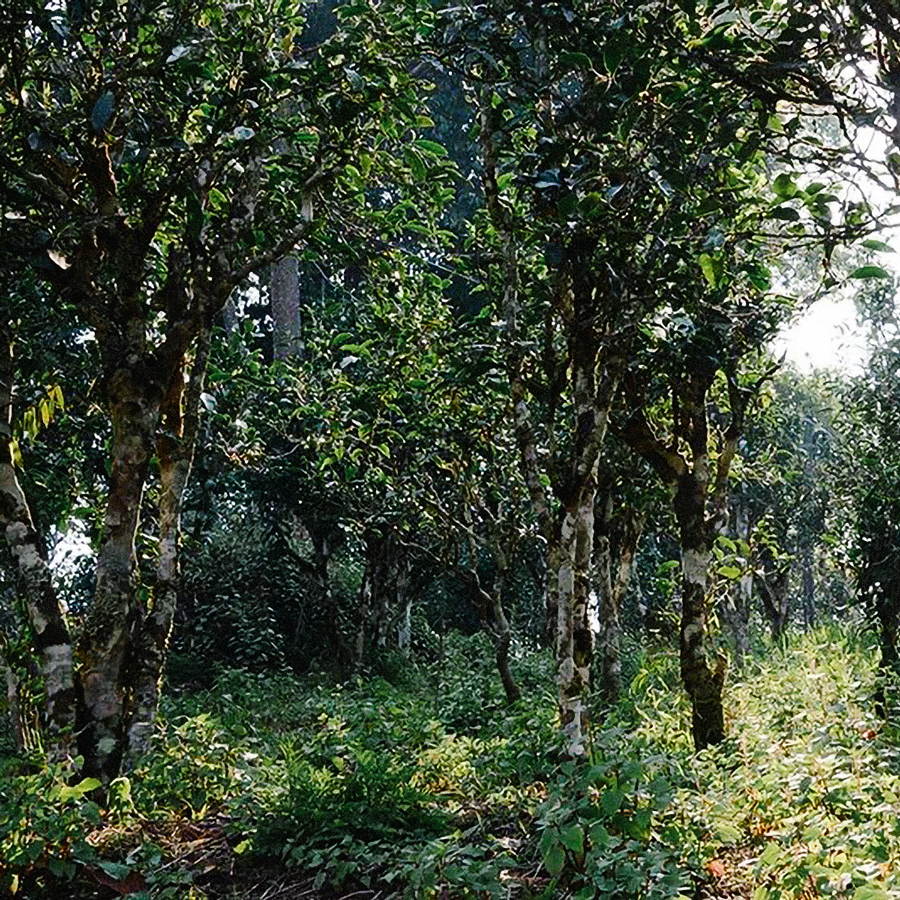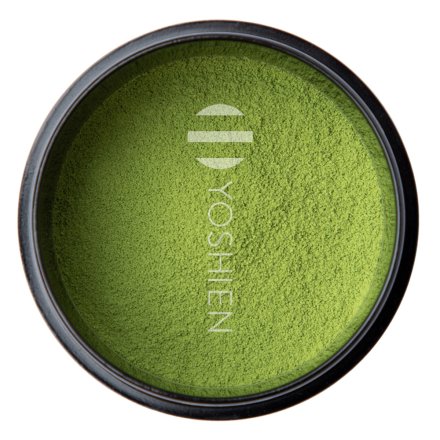The tea village at the edge of Jing Mai Shan is located at 1,600m above sea level. Just about every family in the village is involved in some way with tea production, and most are tea producers.
Jing Mai has been a popular tourist destination even before the boom in Pu-Erh tea in the early 2000s. One reason for this attraction is the large tea tree forest near the village with trees that are many centuries old. One of the tea trees is allegedly over 2,000 years old. The forest is located on a high plateau reachable by foot from the village. The local community as well as the government endeavor to protect this priceless natural area.
Pu-Erh from Jing Mai is sourced either from young trees in the plantations near the forest or directly from ancient tea trees in the forest.
Storage
The tea was quickly fermented under carefully monitored conditions over a period of 45-60 days and then pressed into form. This tea was produced in 2019 and stored in Guang Zhou, China. Since 2024 the tea has continued to be ripened under special conditions at Yoshi En.
Centuries-Old Pu-Erh Trees
The tea plants needed for producing Pu-Erh are autochthonous, large-leafed, and wild-grown tea plants. In contrast to generic tea plants grown around the world, this type does not grow as a bush, but rather as a tree that can live for up to thousands of years. Scientific study of the Camellia taliensis suggests that this tree is the common ancestor of all other types of tea. This cultivar is native to the region where China, Vietnam, Laos, and Myanmar meet. This is also where the Chinese province of Yunnan is located, and the history of Yunnan is also intertwined with the first known attempts to cultivate tea. For this reason, Yunnan is often considered the "cradle of all teas". In the tea forest of Yunnan, each tree has an individual character with a different shape and different cultures of moss and fungi. As such, each tree produces its "own" tea. The older the tree, the deeper its roots extend into the earth and into deep layers of rock and stone. These older trees can absorb minerals and trace elements that are passed on to the leaves and buds. The tea made from the buds and leaves of wild-grown older trees is thus rich in minerals and highly desirable.






















